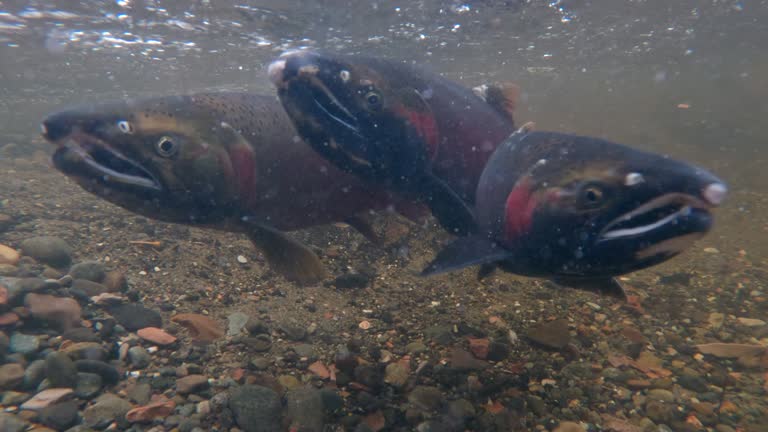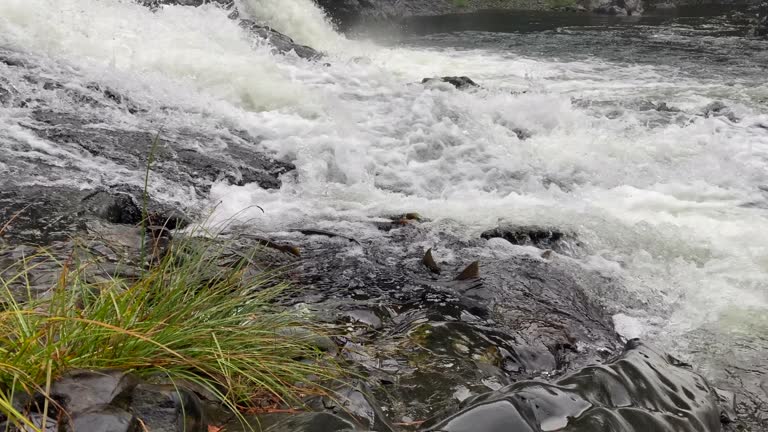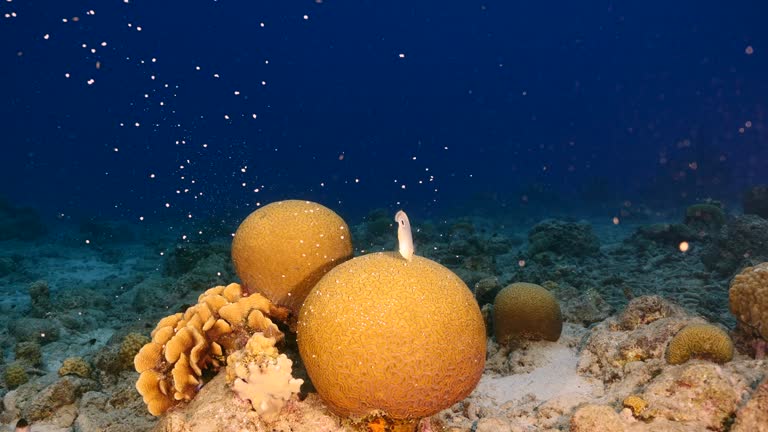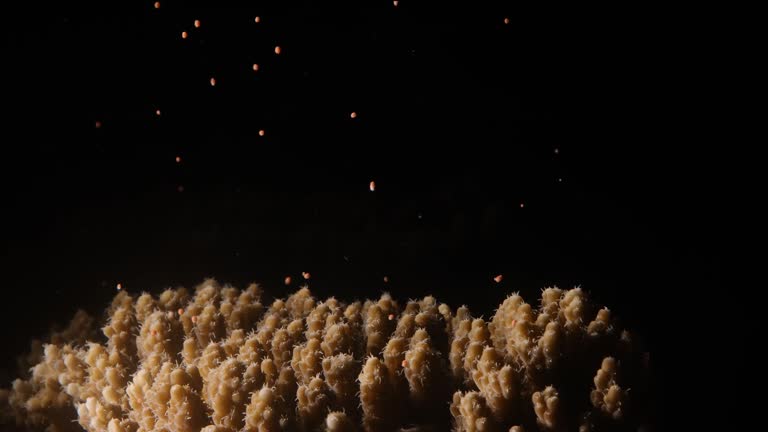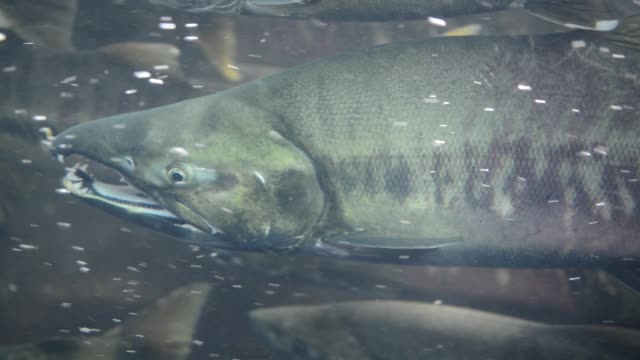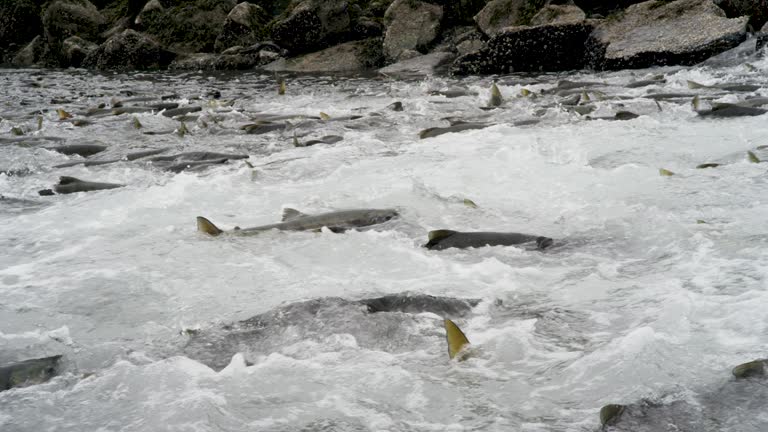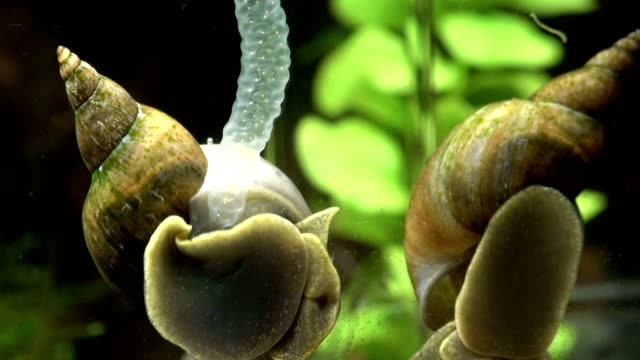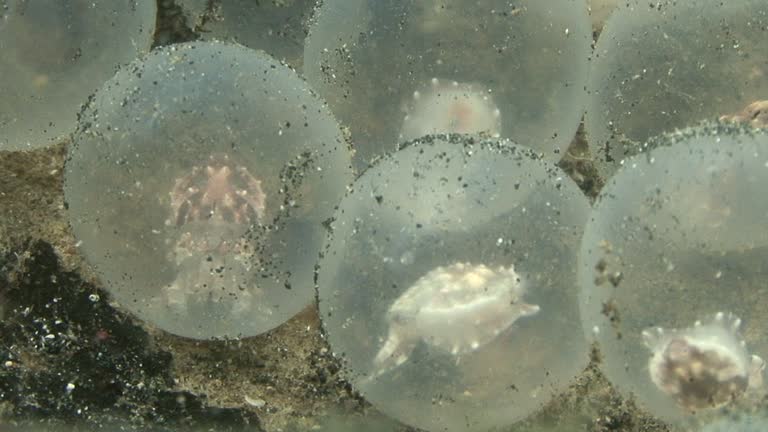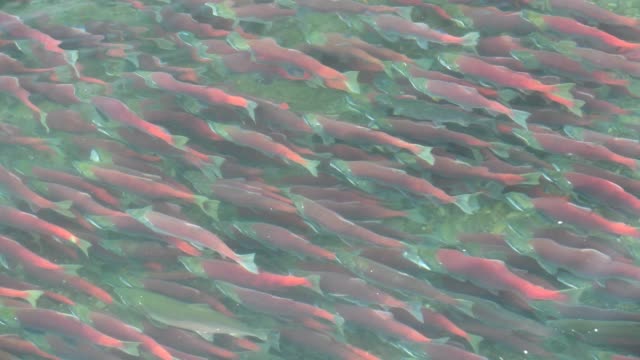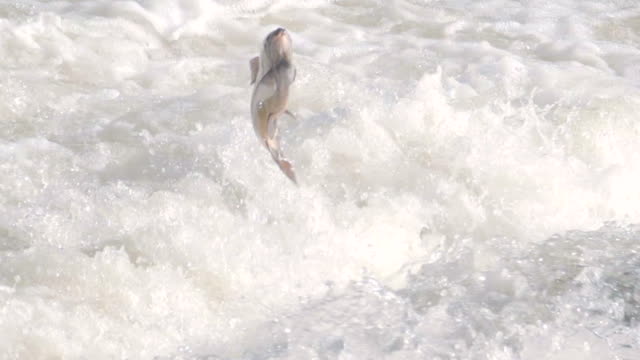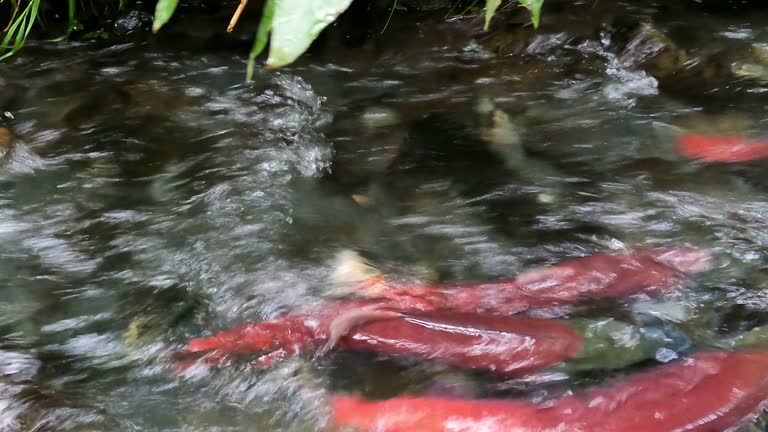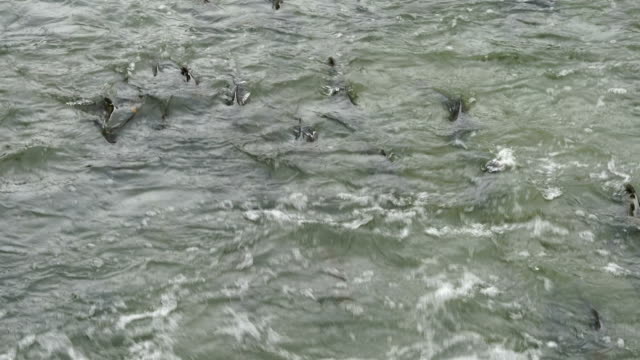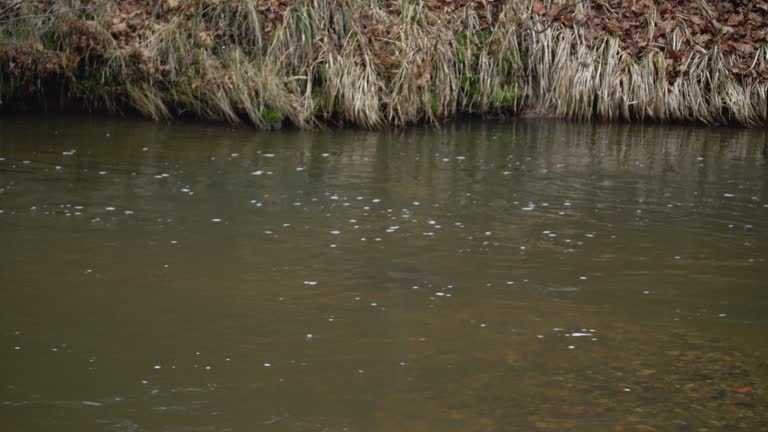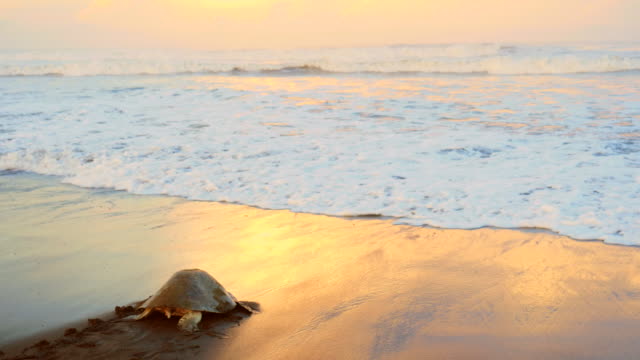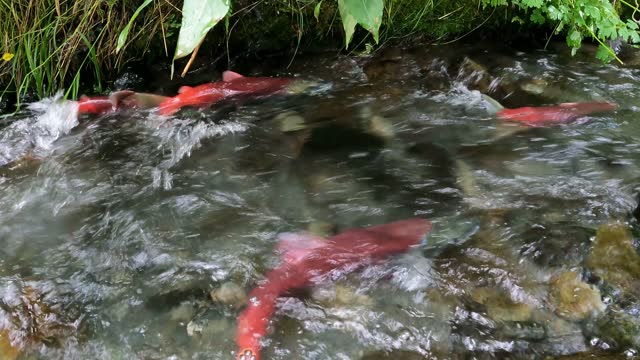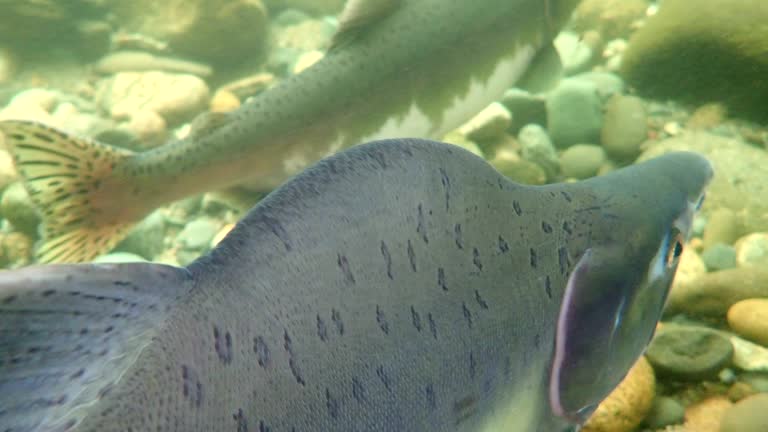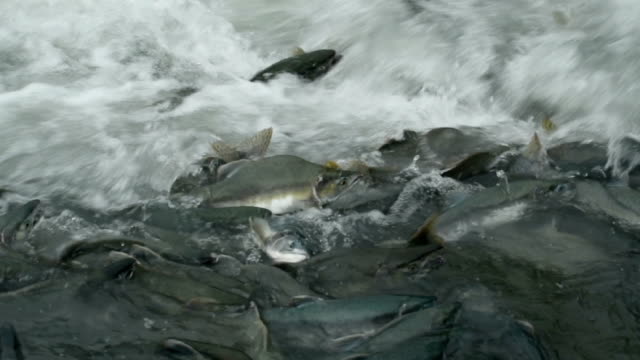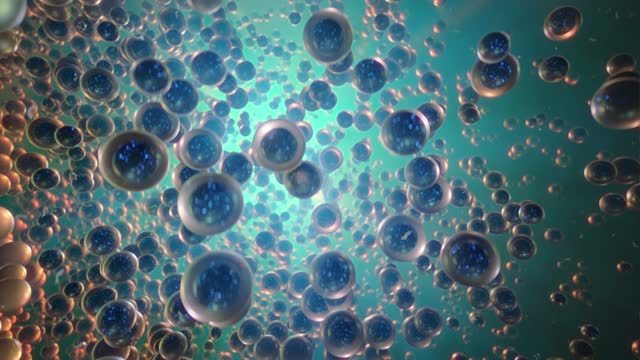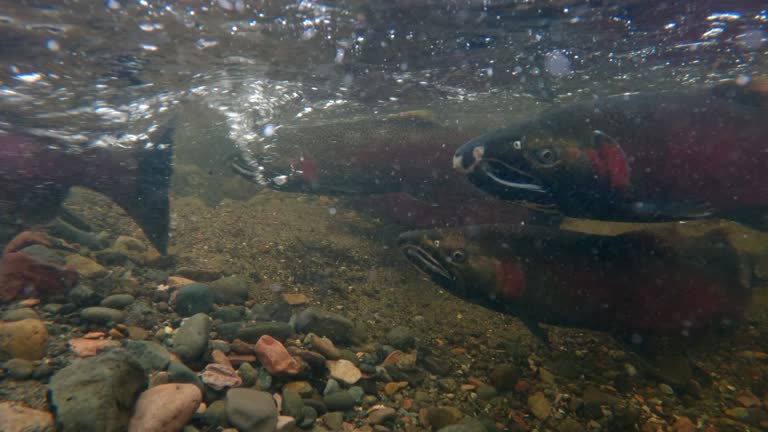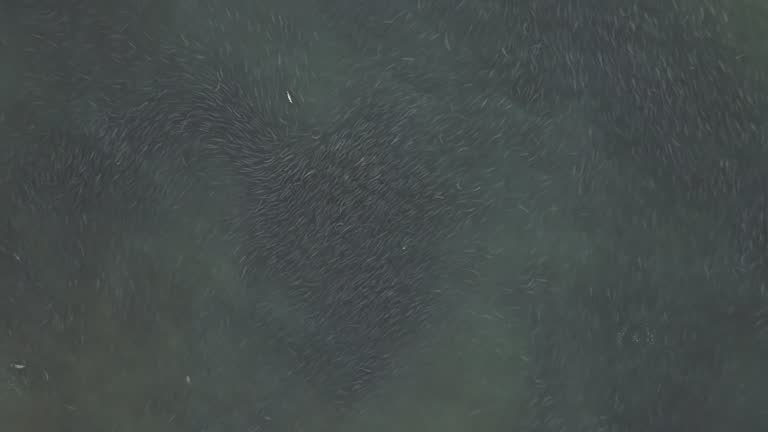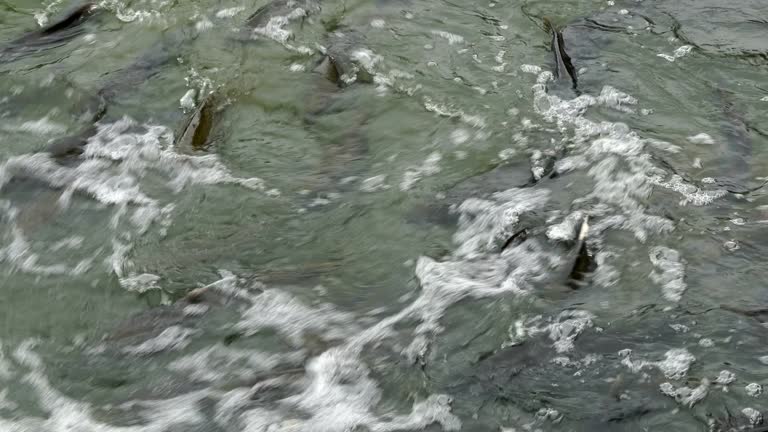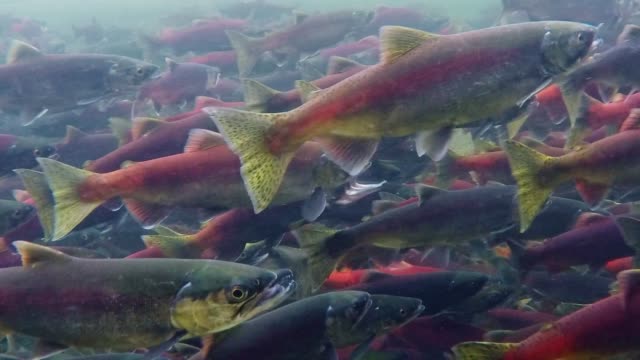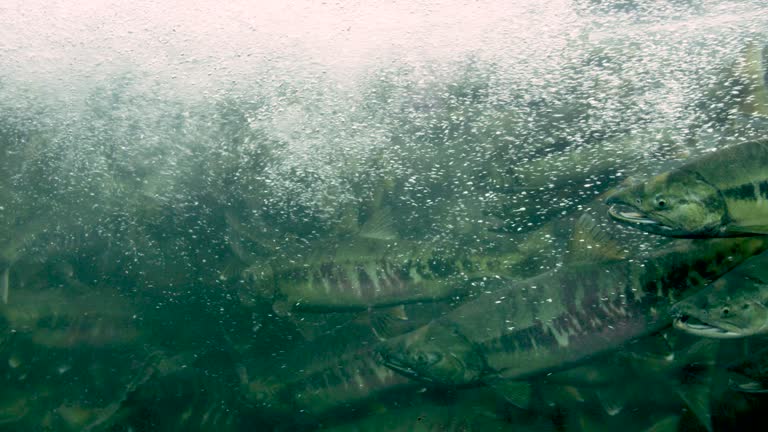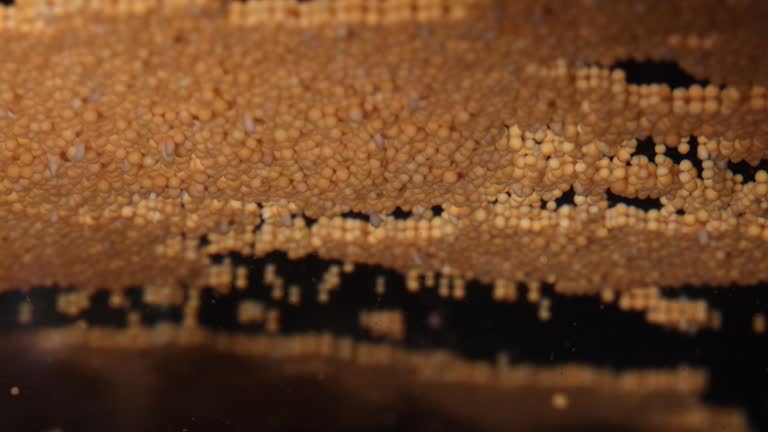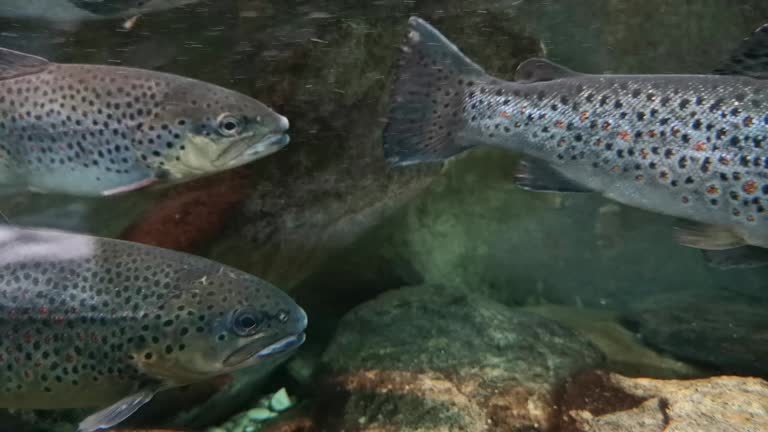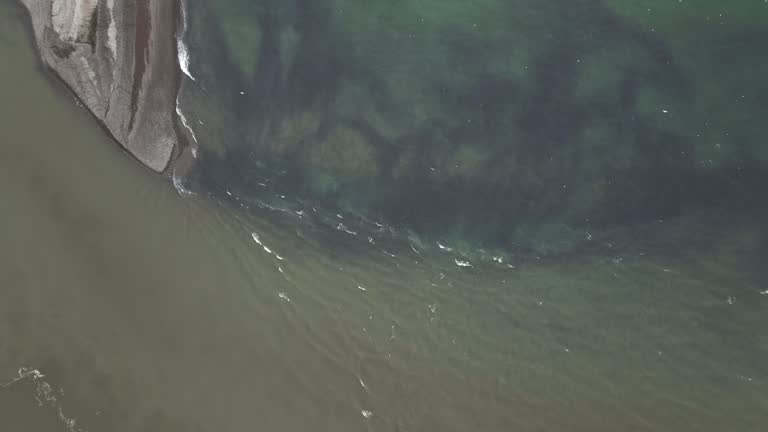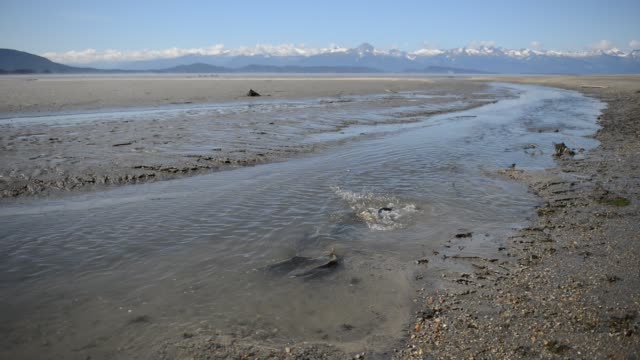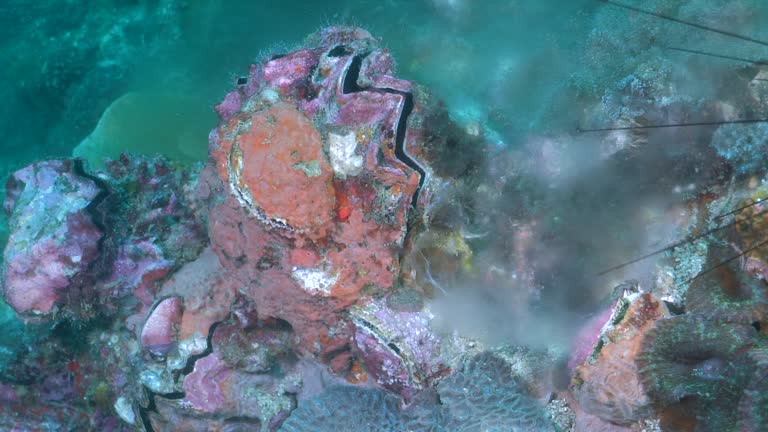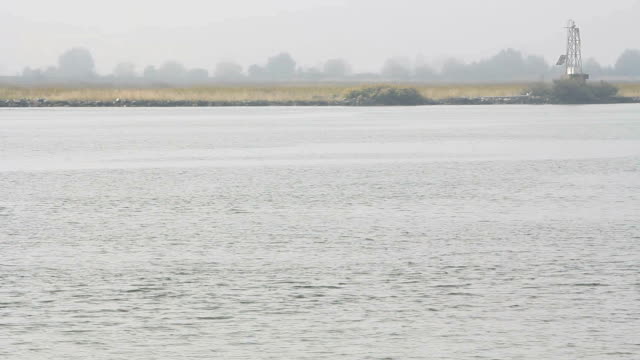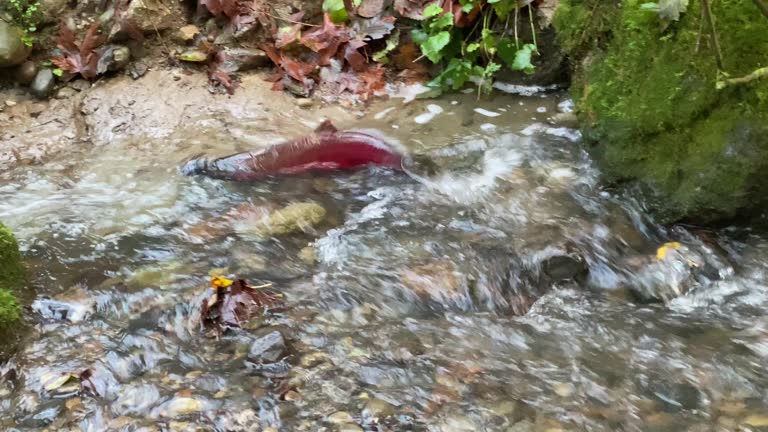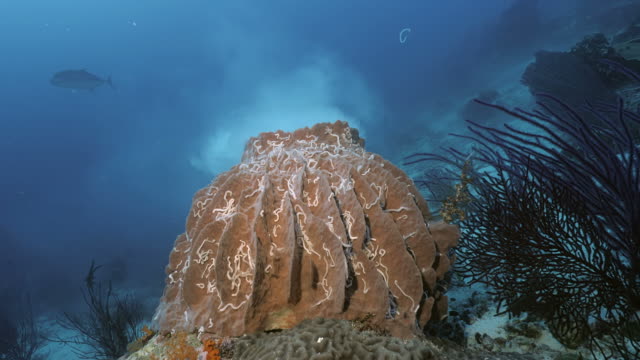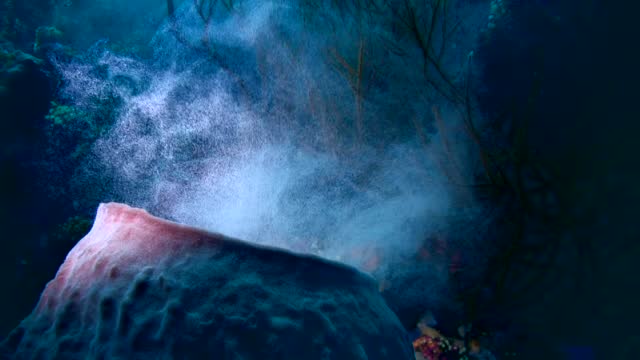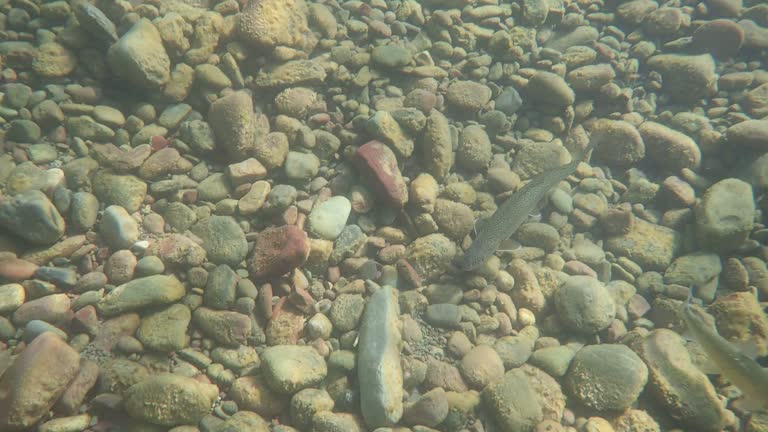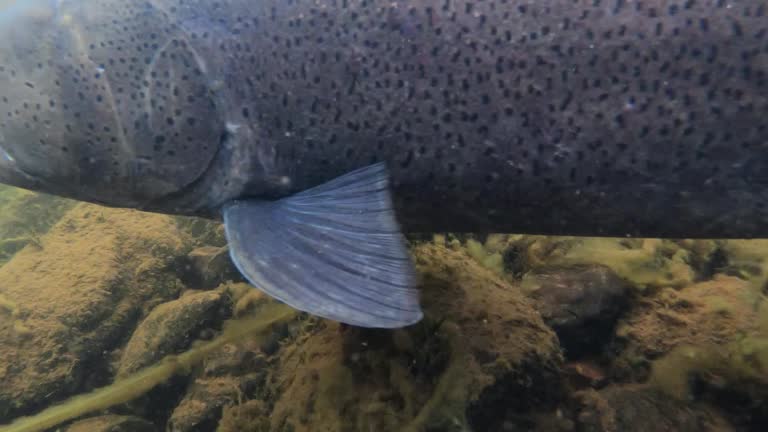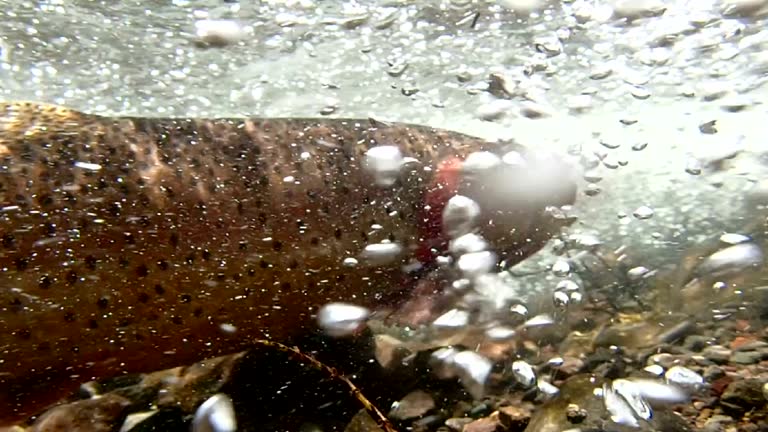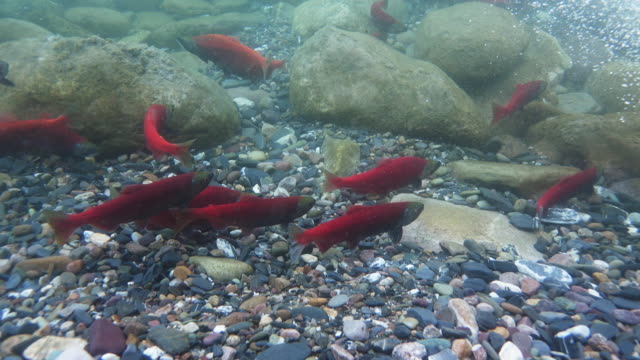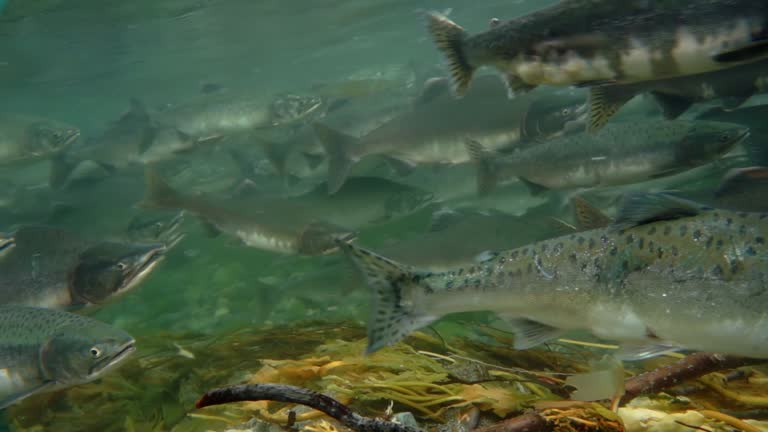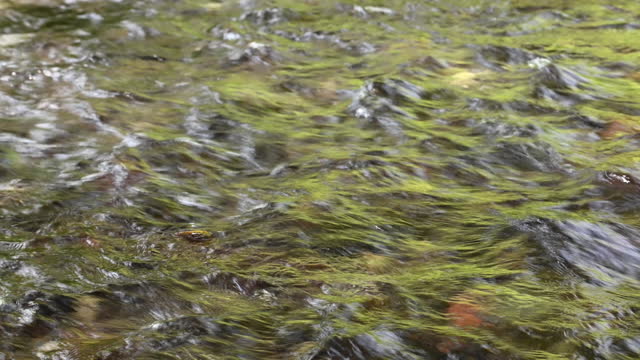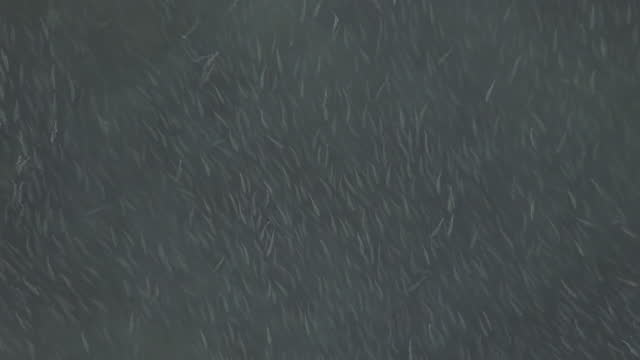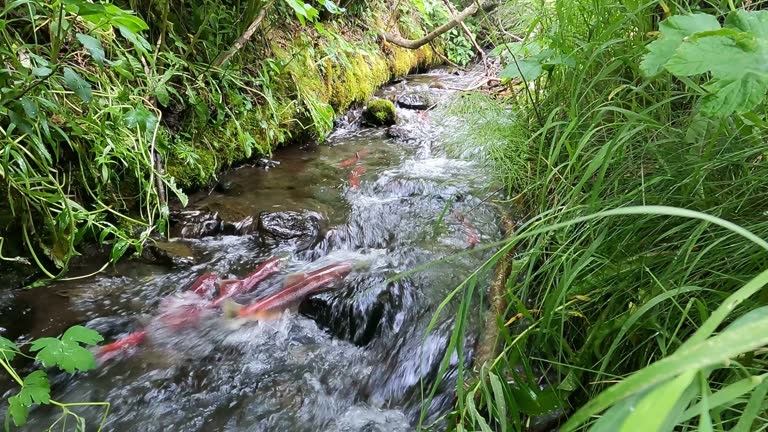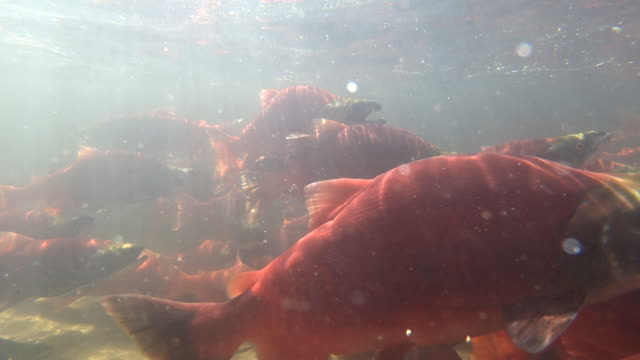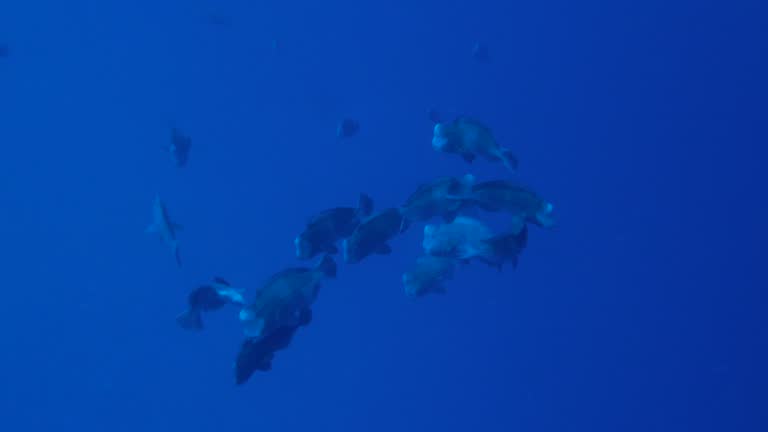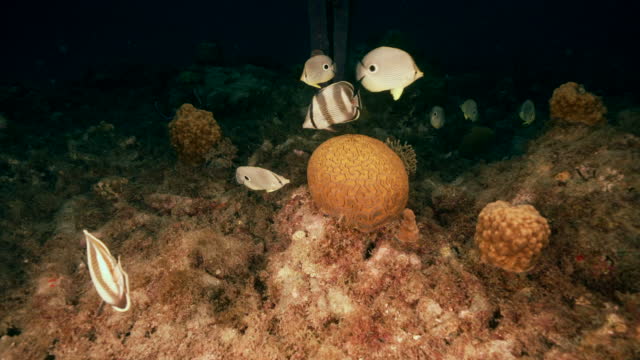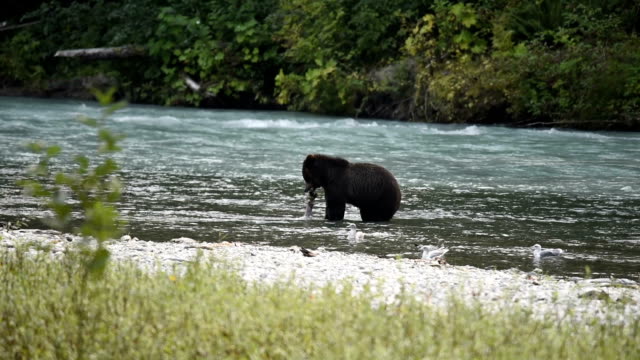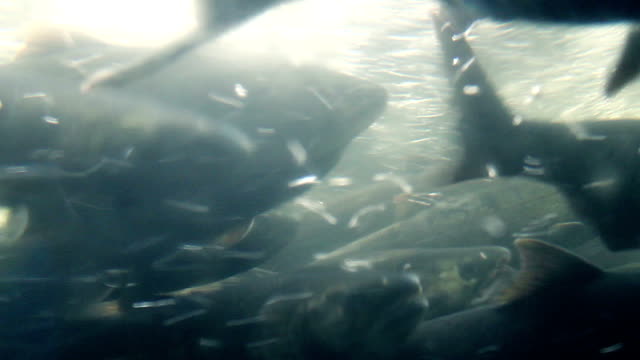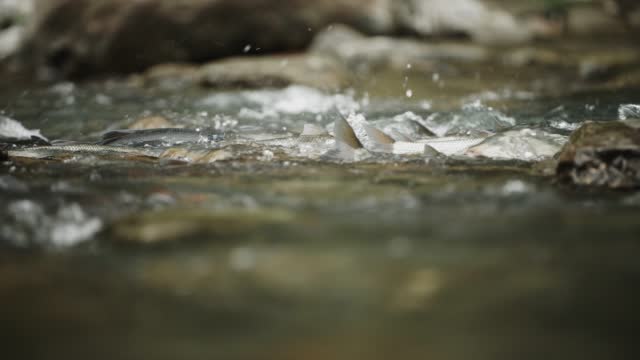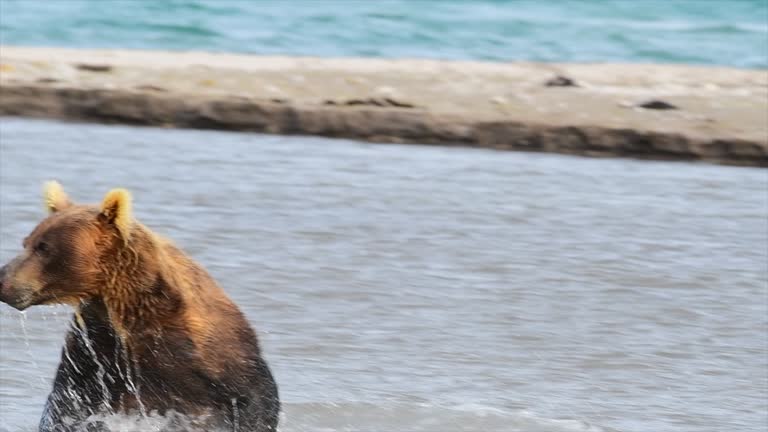
Spawning stock videos and footage
Browse 3,000+ spawning stock videos and clips available to use in your projects, or search for salmon spawning or coral spawning to find more stock footage and b-roll video clips.

At the end of each year, the broadcast spawning scleractinian corals of the Great Barrier Reef are reproducing in a single event by releasing egg-sperm bundles (~2mm) into the water. These bundles float to the water surface where they break apart to release the encapsulated eggs & sperm. Consequently, fertilization takes place and larvae develop, which eventually attach to the reef to form new coral colonies.
At the end of each year, the broadcast spawning scleractinian corals of the Great Barrier Reef are reproducing in a single event by releasing egg-sperm bundles (~2mm) into the water. These bundles float to the water surface where they break apart to release the encapsulated eggs & sperm. Consequently, fertilization takes place and larvae develop, which eventually attach to the reef to form new coral colonies.
Trout swim up Beaver Creek in western Montana to spawn
Underwater view of several coho salmon swimming in a small stream during spawning season in Western Washington.
Chinook salmon spawning the Lewis River in Washington State in shallow pool at Lucia Falls.
marine creatures in natural habitat around Curaçao /Dutch Antilles
At the end of each year, the broadcast spawning scleractinian corals of the Great Barrier Reef are reproducing in a single event by releasing egg-sperm bundles (~2mm) into the water. These bundles float to the water surface where they break apart to release the encapsulated eggs & sperm. Consequently, fertilization takes place and larvae develop, which eventually attach to the reef to form new coral colonies.
A female Sockeye Salmon swims with Coho Salmon up Montana Creek in central Alaska to spawn
Salmon in the water, ready to go upstream against the stream to spawn. Alaska's Summer: A Trio of Scenery Featuring Salmon, Brown Bears, and Rivers.
Water snails in aquarium
Salmon spawn in Tern Lake on the Kenai Peninsula of Alaska
Underwater, Palau - May 25, 2017 : Scuba diving undersea (2017_0520_0531-0525_0851_A)
Perfect super slow motion shot of pink atlantic salmon swimming upstream to spawn
Close up of several salmon swimming up small creek
Salmon spawn in Williwaw Creek on the Kenai Peninsula of Alaska
The Kemp's ridley sea turtle is the rarest species of sea turtle and is critically endangered. It is one of two living species in the genus Lepidochelys. Exuberant tropical animal species. Awesome unique wildlife from around the World.
marine creatures in natural habitat around Curaçao /Dutch Antilles
Close up of several salmon swimming upstream
Salmon swims up Montana Creek in central Alaska to spawn
Pink Salmon fight for spawning position in a creek near Valdez, Alaska
2010 Adams River Sockeye run. Millions of salmon return to the Adams River from the Pacific Ocean to spawn.
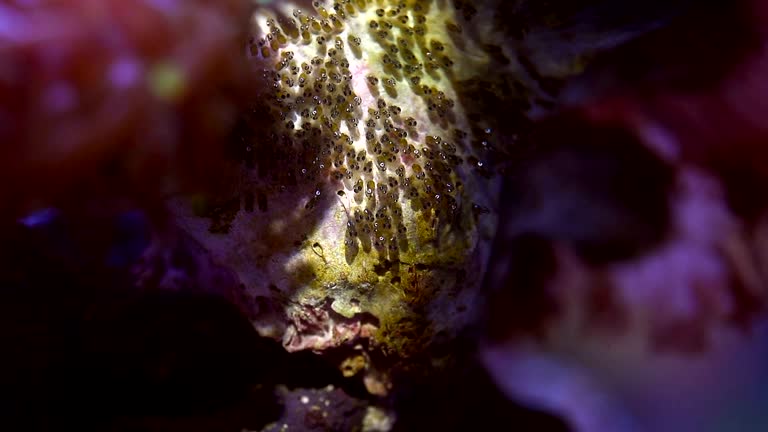
Clownfish breeding
Microscopic image of eggs or some kind of microorganisms. Cinematic 3D animation picturing origins of life, or microorganism reproduction.
Underwater view of several coho salmon swimming in a small stream during spawning season in Western Washington. The camera rises above water as one salmon fights its way upstream.
An aerial view vertically downwards of a spawning river with thousands of coho salmon swimming in it. The concept of the spawning period of fish
At the end of each year, the broadcast spawning scleractinian corals of the Great Barrier Reef are reproducing in a single event by releasing egg-sperm bundles (~2mm) into the water. These bundles float to the water surface where they break apart to release the encapsulated eggs & sperm. Consequently, fertilization takes place and larvae develop, which eventually attach to the reef to form new coral colonies.
Salmon swim up the Crystal River in northern Michigan to spawn
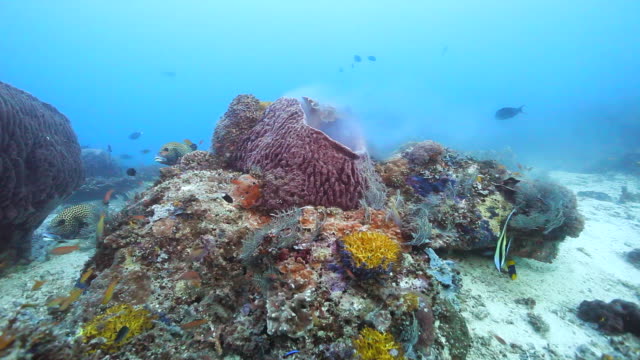
a male Giant Barrel Coral spawning.
Kokanee salmon spawning upstream in creek, underwater video
Schools of salmon crowded in the water and swimming upstream. Underwater shot. Alaskan Salmon Migration: A Journey Full of Challenges and Wonders. Slow motion shot.
Thousands of eggs, microorganisms or bacteria floating in water or some liquid.
At the end of each year, the broadcast spawning scleractinian corals of the Great Barrier Reef are reproducing in a single event by releasing egg-sperm bundles (~2mm) into the water. These bundles float to the water surface where they break apart to release the encapsulated eggs & sperm. Consequently, fertilization takes place and larvae develop, which eventually attach to the reef to form new coral colonies.
Wild red salmon fish Sockeye Salmon Oncorhynchus nerka swimming in shallow water in river, breathes heavily. Pacific salmon red color during spawning, dying after spawn. Slow motion, close-up view.
At the end of each year, the broadcast spawning scleractinian corals of the Great Barrier Reef are reproducing in a single event by releasing egg-sperm bundles (~2mm) into the water. These bundles float to the water surface where they break apart to release the encapsulated eggs & sperm. Consequently, fertilization takes place and larvae develop, which eventually attach to the reef to form new coral colonies.
Abstract network growth. Technology themed background. 4k UHD animation.
rainbow trout in clear fresh water
An aerial view vertically downwards of a spawning river with thousands of coho salmon swimming in it. The concept of the spawning period of fish
Bivalve ejects spawn into water column near Gato Island, Philippines
Sockeye salmon, near the mouth of the Fraser River, jumping as they head upstream on their migration to the spawning grounds. Near Vancouver, British Columbia, Canada.
An aerial view vertically downwards of a spawning river with thousands of coho salmon swimming in it. The concept of the spawning period of fish
A red Sockeye salmon swimming upstream in a creek before spawning, British Columbia, Canada
Camera approaches sponge which is releasing spawn. Video lights are used.
Rare! Barrel sponge (Callyspongia sp.) spawning, a very unique moment.
A trout swims up the Middle Fork of the Flathead river in northern Montana
Big taimen pecked on a fishing hook, the video was shot underwater
Yellowstone Cutthroat spawn in a creek that connects upper and lower Aero lakes in Gallatin National forest
An underwater look at Kokanee Salmon during their fall migration in British Columbia.
School of salmon fish underwater of Sea of Okhotsk. Salmonidae Game-fish in cold clear transparent water.
Canada, Indonesia, Maldives, South Asia, Slow Motion
Schools of salmon crowded in the water and swimming upstream. Underwater shot. Animal food chain as salmon return to freshwater to spawn, Alaska, summer 2017.
Salmon spawn in Williwaw Creek on the Kenai Peninsula of Alaska
Common frog in a cold water during springtime spawning in Estonia, Northern Europe
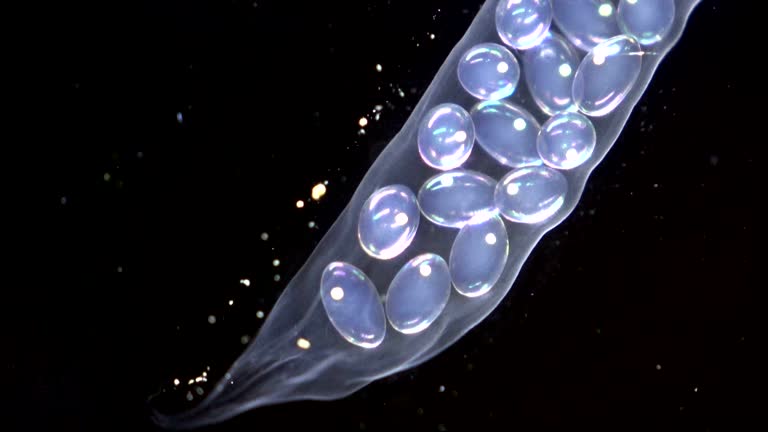
Eggs of water snails in aquarium
trout spawn in a small creek in South Western Montana
Rushing Water Surface with trout underneath
An aerial view vertically downwards of a spawning river with thousands of coho salmon swimming in it. The concept of the spawning period of fish
Small creek with swimming salmon
Underwater shot of red salmon during spawning season
marine creatures in natural habitat around Curaçao /Dutch Antilles
Underwater, Palau - May 25, 2017 : Scuba diving undersea (2017_0520_0531-0525_0847_B)
marine creatures in natural habitat around Curaçao /Dutch Antilles
marine creatures in natural habitat around Curaçao /Dutch Antilles
Underwater shot of red salmon during spawning season
School of pink (hump-back) salmon fish underwater on rapids near surface of water Sea of Okhotsk Russia. Salmonidae Oncorhynchus gorbuscha game-fish in clear transparent water.
Underwater close up of red pink swimming salmon
Grizzly bear standing in a stream and eating salmon
Many salmon fish swimming against the current
females and males fertilization of eggs, procreation. spawning season, river fish breeding, mating season. conception, the birth of a new life survival. group of fish river stones water flow. animal rights, welfare
Sockeye or Red Salmon swim up Dave's creek on the Kenai Peninsula in Alaska to spawn


